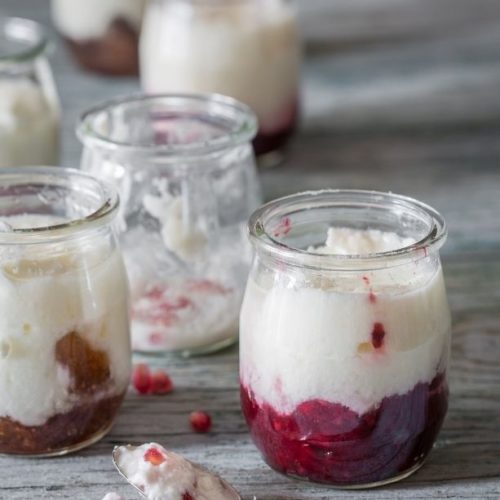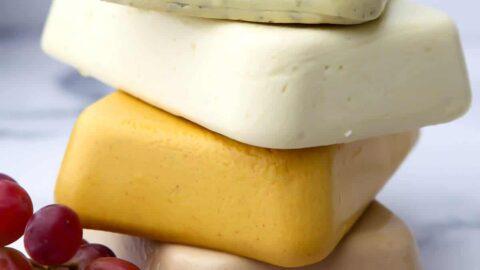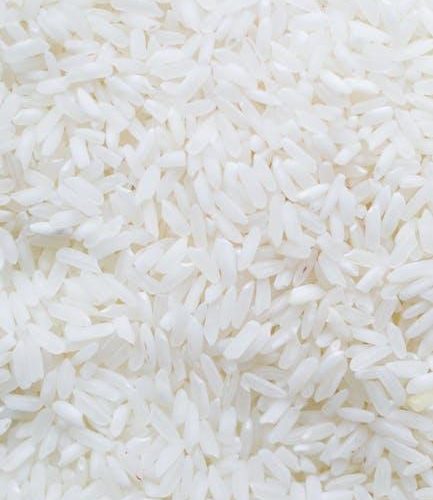Welcome to the wonderful world of dairy delights, where we transform humble milk into creamy masterpieces that will have your taste buds doing a happy dance. Whether you’re a cheese connoisseur or a yogurt fanatic, there’s nothing quite like the satisfaction of crafting your own artisan creations right in the comfort of your own kitchen. So grab your apron and get ready to dive into the delicious, dairy-filled adventure of crafting artisan cheese and yogurt at home!
Contents
Selecting the Right Milk for Cheese and Yogurt Making
When it comes to making delicious cheese and yogurt at home, choosing the right milk is crucial. After all, milk is the main ingredient in these dairy products and can greatly affect the final taste and texture. So, how do you know which milk to pick? Let me break it down for you:
First things first, you’re going to want to use fresh, high-quality milk for the best results. Whether you prefer cow, goat, or sheep milk, make sure it’s as fresh as possible. The fresher the milk, the better your cheese and yogurt will turn out. Trust me, your taste buds will thank you!
Next, consider the fat content of the milk. The fat content of the milk will influence the richness and creaminess of your cheese or yogurt. Whole milk tends to produce a creamier end product, while skim milk will result in a lighter, less fatty outcome. It’s all about personal preference, so choose wisely!
Lastly, take into account any additives or pasteurization processes that have been used on the milk. Some cheeses and yogurts may require raw milk for the best results, while others might benefit from pasteurized or homogenized milk. Just be sure to read the label carefully and select a milk that aligns with your recipe needs. Happy cheese and yogurt making!
cultures-and-enzymes-in-cheese-and-yogurt-production”>Understanding Cultures and Enzymes in Cheese and Yogurt Production
Ever wondered why Gouda tastes so different from Feta? It all comes down to the cultures and enzymes used in the production process. These microscopic organisms and proteins play a crucial role in determining the flavor, texture, and overall quality of cheese and yogurt.
When it comes to cultures, each type brings its own unique set of characteristics to the table. From Lactococcus lactis to Streptococcus thermophilus, these friendly bacteria help to acidify the milk, develop complex flavors, and ensure proper fermentation. And let’s not forget about the mold cultures that give blue cheeses their distinctive veins of blue-green goodness!
Enzymes, on the other hand, are like the behind-the-scenes heroes of the dairy world. Whether it’s rennet for making cheese or lactase for fermenting yogurt, these proteins work tirelessly to break down milk sugars, coagulate proteins, and create that oh-so-creamy consistency we all love. Without them, we’d be stuck with a rather unappetizing curdled mess.
So, the next time you’re enjoying a delicious slice of Brie or a tangy spoonful of Greek yogurt, take a moment to thank the cultures and enzymes that made it all possible. After all, they’re the real MVPs of the dairy aisle!

Mastering the Techniques of Curdling and Draining
So you’re ready to become a true master of curdling and draining, huh? Well, strap in because things are about to get cheesy!
First things first, you need to master the art of curdling. It’s all about finding that perfect balance between coagulation and separation. You want your curds to be firm, yet delicate. Like a good breakup – clean and precise, with no drama.
Next up, draining. This is where the magic happens. Get yourself a good draining device – whether it’s a fancy cheese cloth or just a trusty old colander. Let gravity do its thing and watch as the whey separates from the curds. It’s like watching a beautiful sunset, only cheesier.
Remember, practice makes perfect when it comes to curdling and draining. Don’t be afraid to experiment and try new techniques. Who knows, you might just discover the next big cheese craze. So go forth, young curdler, and may your whey always be clear!

Aging and Flavor Development in Artisan Cheeses
Have you ever wondered why aged cheeses taste so darn good? Well, it turns out that aging plays a crucial role in the flavor development of artisan cheeses. As cheese ages, enzymes break down proteins and fats, creating a complex and nuanced flavor profile that can’t be replicated in young cheeses.
During the aging process, cheese wheels are carefully monitored and flipped regularly to ensure even ripening. This may seem like a tedious task, but it’s all part of the artisan cheesemaker’s craft. The cheeses are also stored in carefully controlled environments, where temperature and humidity levels are adjusted to optimize flavor development.
As cheeses age, they undergo chemical changes that result in the formation of new flavors. This is why aged cheeses often have a sharper, nuttier, or more complex taste compared to younger cheeses. The presence of mold on the rind of certain cheeses also contributes to their unique flavor profile.
So, the next time you bite into a deliciously aged artisan cheese, remember that it’s the result of weeks or even months of careful aging and flavor development. It’s a labor of love that produces cheeses with rich and distinctive flavors that are truly worth savoring.

Perfecting the Art of Yogurt Fermentation
Are you tired of your homemade yogurt turning out more like liquid than creamy goodness? Well, fear not, because we are here to help you perfect the art of yogurt fermentation!
First things first, you’ll need to choose the right type of milk. Whether it’s cow’s milk, goat’s milk, or even almond milk, make sure it’s fresh and high-quality. Remember, happy cows make happy yogurt!
Next, it’s all about finding the perfect temperature for fermentation. Too hot and your yogurt will turn out too runny, too cold and it won’t ferment at all. It’s like finding the Goldilocks zone, but for bacteria!
And finally, don’t forget to add a dash of love and patience. Fermentation is a slow and delicate process, so give your yogurt the time it needs to develop its full flavor and texture. Trust us, your taste buds will thank you!
Troubleshooting Common Issues in Home Cheese and Yogurt Making
So, you’ve embarked on the wonderful journey of making your own cheese and yogurt at home. But uh-oh, it seems like things aren’t going as smoothly as you had hoped. Don’t worry, we’ve got you covered with some hilarious troubleshooting tips to get you back on track!
If your cheese or yogurt isn’t setting properly, don’t panic. It could be due to a variety of factors, such as temperature, humidity, or even the alignment of the planets. Try these solutions to save your dairy dreams:
- Double-check the temperature – maybe your yogurt needs a warm hug to set properly.
- Make sure you’re using the freshest ingredients – outdated milk might rebel against your cheese-making plans.
- Conduct a ritual dance around the kitchen to appease the cheese gods – you never know, it might just work!
If your cheese or yogurt turns out too tangy or bitter, fear not! It’s all part of the learning process. Here are a few quick fixes to tone down the sass in your dairy creations:
- Try adding a pinch of sugar to counteract the tanginess – your cheese or yogurt might just need a little sweetness in its life.
- Consult a dairy guru – sometimes, you just need a second opinion from someone who knows their whey around the curds.
FAQs
How much patience do I need to make artisan cheese and yogurt at home?
Oh, the level of patience required is as high as a tower of cheese wheels! Making artisan cheese and yogurt at home takes time and dedication. You’ll need to wait for the cheese to age and the yogurt to ferment, but trust us, the end result will be worth the wait.
Can I use regular milk from the grocery store to make artisan cheese and yogurt?
Well, you could, but where’s the fun in that? To truly elevate your cheese and yogurt game, we recommend using high-quality, preferably organic, milk from a local farm. The flavor will be more delicious, and you’ll feel like a dairy wizard in the process.
Do I need any special equipment to make artisan cheese and yogurt at home?
Forget fancy equipment, all you need is a little imagination and a whole lot of love for dairy products! Okay, fine, you might need a few basic tools like a thermometer, cheesecloth, and some kitchen staples. But hey, who doesn’t love shopping for kitchen gadgets?
Is it safe to make artisan cheese and yogurt at home?
As long as you follow proper food safety guidelines and use clean equipment, making artisan cheese and yogurt at home is totally safe. Just remember, if in doubt, throw it out. Trust your instincts and your taste buds!
How can I experiment with different flavors and textures in my artisan cheese and yogurt?
Get ready to unleash your inner mad scientist of dairy! You can experiment with different types of milk, cultures, herbs, spices, and even fruits to create unique and delicious flavors in your artisan cheese and yogurt. Go wild, we won’t judge!
—
Say Cheese, Say Yogurt!
And there you have it – the secret to crafting artisan cheese and yogurt right in the comfort of your own home! Don’t be afraid to get a little cheesy (pun intended) and yogurt-y with your creations. With a little patience and practice, you’ll soon be impressing your friends and family with your homemade dairy delights. So go ahead, grab your apron and get ready to become the ultimate dairy master! Happy crafting!




